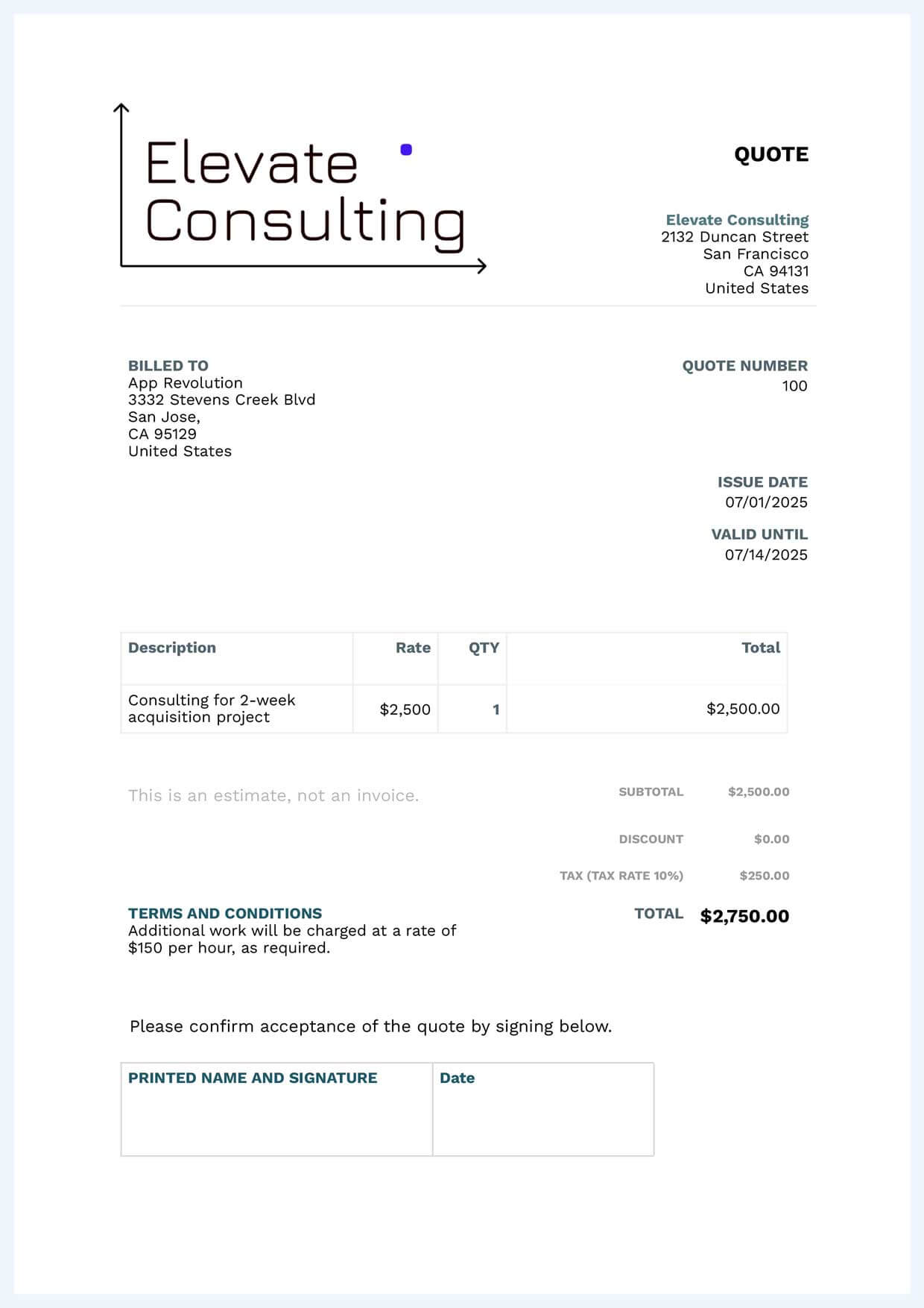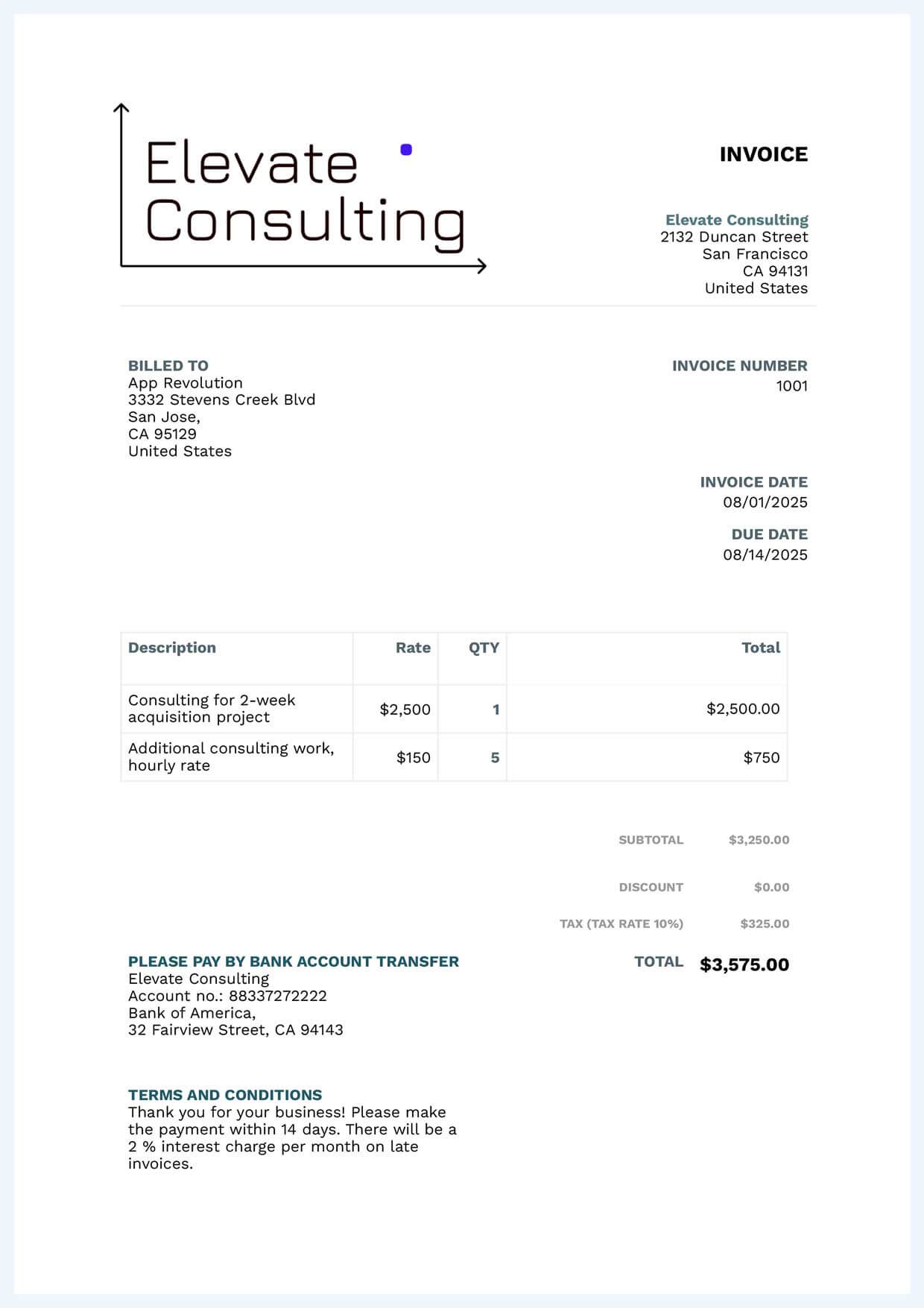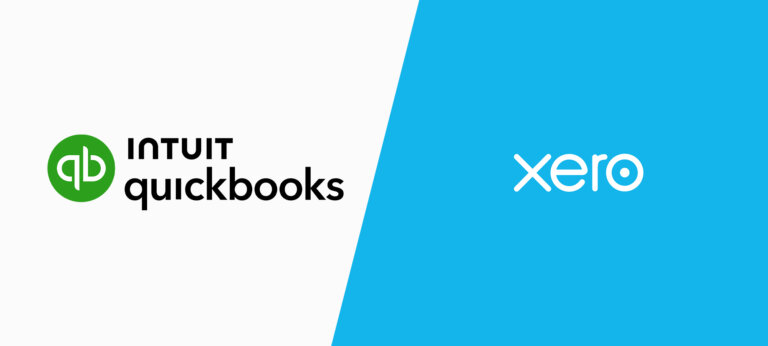Quotes and invoices are both part of the sales process of professional businesses and freelancers. Let’s take a look at the differences between a quote vs. invoice.
What is a quote?
A quote is an offer that you send to potential customers so that you can both agree on the details of the sale. Most importantly, it shows an estimate of the costs. A quote can also be called a quotation, sales quote, or a price quote.
Customers can ask for quotes when they’re considering a big purchase, or if they need internal approval before giving you the green light.
If the client doesn’t ask for a quote, it can be a good idea for you to suggest it. That way you can iron out all the details in advance, and avoid confusion, a disputed invoice or—worst case–a refusal to pay.
You might have to amend the quote before the customer agrees to it, but don’t worry, that’s part of the reason why you provide a quote, and a little bit of work ahead of time can save you a lot of headache down the road.
What should a quote include?
A quote can also be called an estimate, but a quote is usually more formal than throwing out a ballpark figure.
The quote should include all the information that the invoice will eventually include. This is because the point of sending a quote is to avoid unpleasant surprises on your part or the customers’ part when you send the invoice.
That means the quote should include:
- the header ‘quote’ or ‘quotation’
- the date the quote was created, and how long the quote is valid for
- your contact details and the customer’s contact details
- a description the products, services or projects you’re going to provide, along with prices
- consumption tax and discounts, if applicable
- delivery or shipping costs, if applicable
- payment terms, in other words, how and when the buyer should pay
- other relevant information, such as the timeframe, and information about warranties or returns
If the quote is for a project or service, you should make sure to specify that additional work might be required. You should specify the terms of the additional work—for example whether the client has to approve it—and the price, for example an hourly rate.
It’s also a good idea to include your logo to make the quote look more professional and recognizable.
Download a free quote template now
This is an example of a quote for consultant work:

What is an invoice?
An invoice is sent after a product is delivered or a service or project is completed. The invoice shows which product or services were sold, and requests payment from the customer.
The best way to make invoices is to use invoicing software. Then you can be sure that the invoice includes all the necessary details for you to get paid on time.
What should an invoice include?
If you’ve sent a quote in advance, your invoice should look exactly the same, except for these important differences:
- Due date, your invoice should have the date that payment is due by
- Invoice number, each invoice has to have a unique number
- The actual costs, if there were any extra work, make sure to reflect that in the invoice
- The delivery date, the day you provided the goods or service
This is an example of an invoice for the same consultant work as above:


Quote vs. invoice
These are some of the most important differences between quotes and invoices:
| Quote | Invoice | |
|---|---|---|
| When is it sent? | Before the sale | After the sale |
| What is the purpose? | To estimate costs | To request payment |
| What is the due date? | The date the quote expires | The date payment has to be made by |
| Which costs are included? | Estimated costs | Actual costs |
Frequently asked questions about quote vs. invoice
No, a quote is sent before a sale is made, to outline the costs and details and to make sure the buyer and seller are in agreement. An invoice, on the other hand, is sent after the sale is made, to show what was sold and to request payment from the buyer.
Download a free quote template
Send invoices for free
The invoice should match the quote, yes, otherwise you risk the client being confused, disagreeing with the content, or even refusing to pay the invoice. The point of a quote is to make sure you’re on the same page, and that the sale and the payment will go through smoothly.
There are some differences between an invoice and a quote: The invoice should include the due date, the delivery date, a unique invoice number and the actual costs—make sure to include the possibility of additional costs in the quote, as well as the rate you’ll be charging for additional work.
Download a free quote template
Send invoices for free
Yes, if you’ll be charging consumption tax—either VAT, sales tax or GST—on the invoice, you should include information about VAT and the VAT rate on the quote. That way, you can avoid unpleasant surprises for your customers.
Read more about consumption tax.
Yes, but you should try to avoid always charging more. However, there are instances where the invoice amount is higher than the quote:
– The customer changed the scope of the project or service
– There were unexpected issues that required more work
– You were asked to provide additional services or products
Make sure to communicate with the customer throughout the process, so that they’re onboard, and specify on the invoice exactly what it is you’re charging extra for.
See also: How to build great relationships with customers
A quote is usually more thorough than an estimate.
The estimate can just be a number that you include in your preliminary negotiations with the customer, while the quote breaks down all the costs included once you have a thorough understanding of the customer’s requirements. The quote also provides information about taxes.





